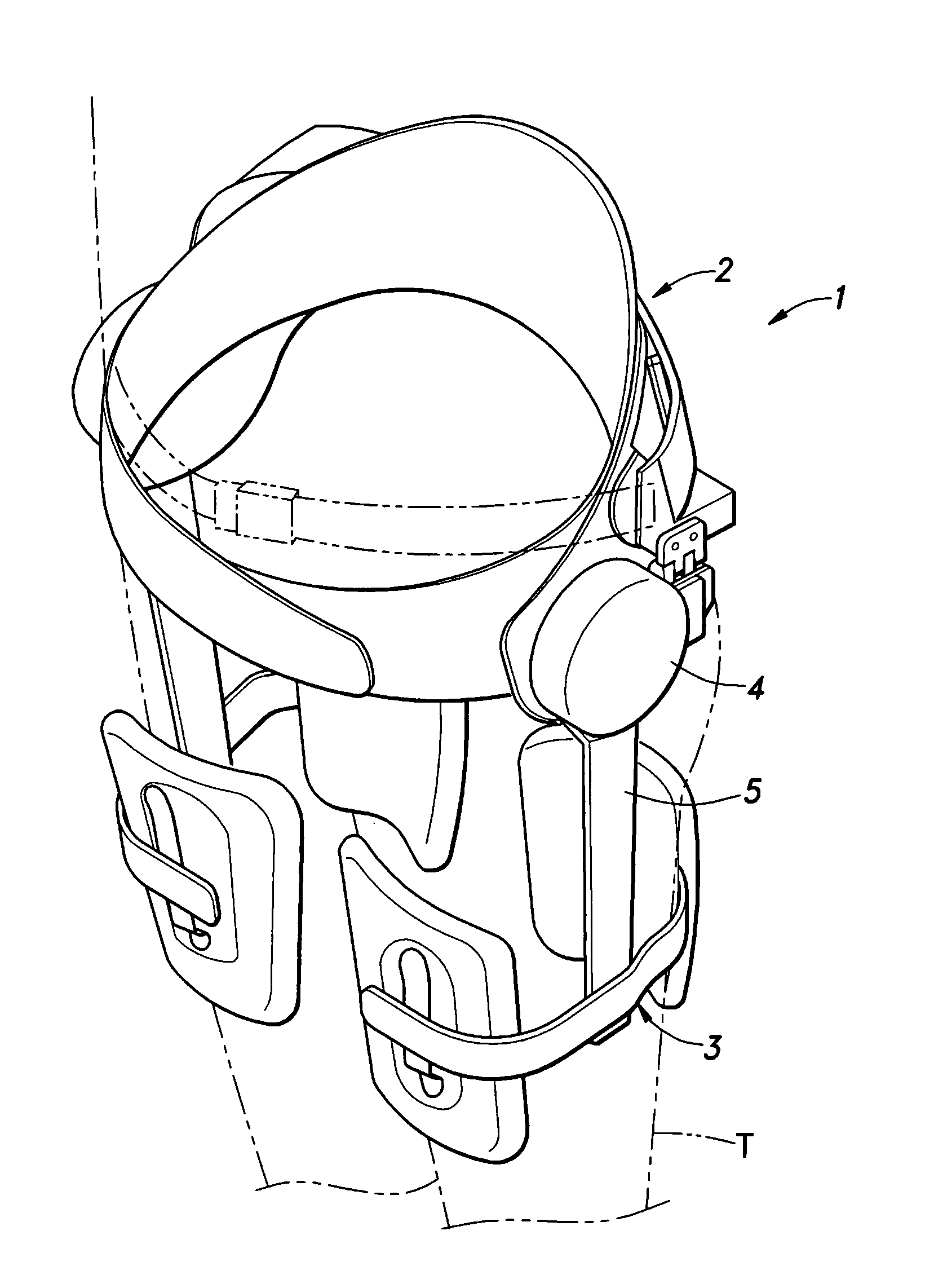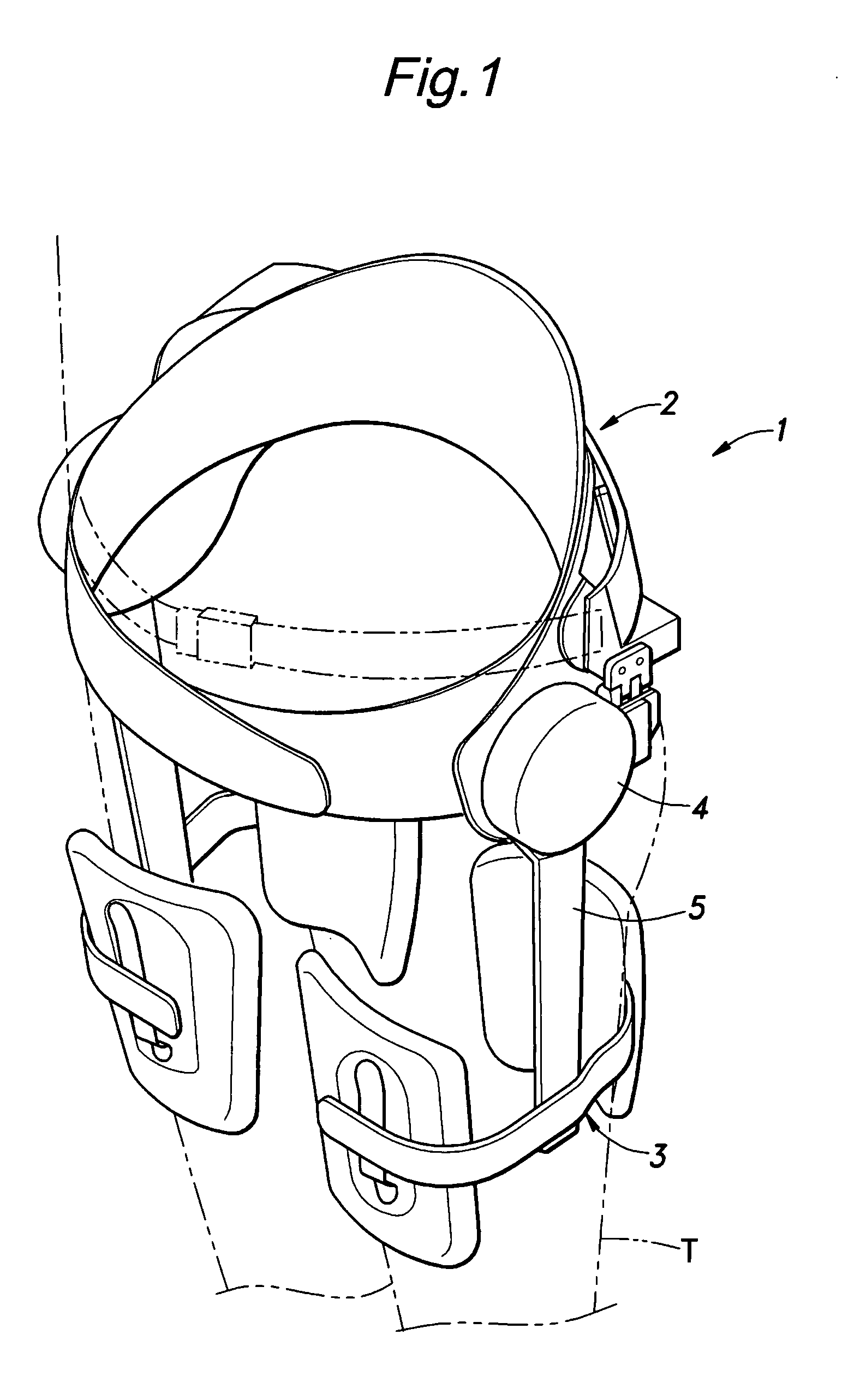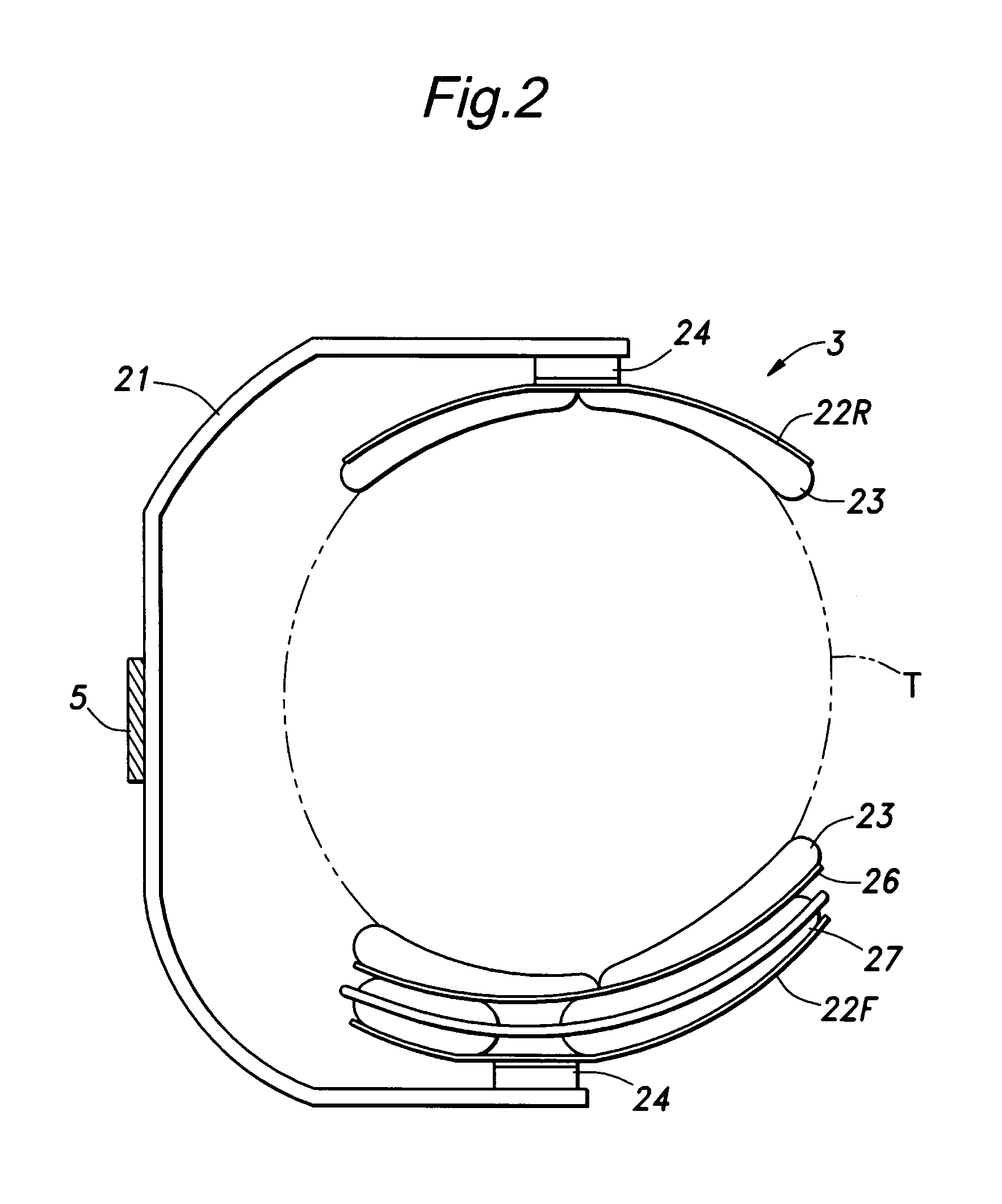Walking assistance device
a technology of assistance device and support member, which is applied in the field of walking assistance device, can solve the problems of limiting the freedom of movement of the wearer, the relative movement between the support member and the body, and the wearer's discomfort was inevitable, and achieves the effects of easy deformation, easy deformation, and increased support surface area
- Summary
- Abstract
- Description
- Claims
- Application Information
AI Technical Summary
Benefits of technology
Problems solved by technology
Method used
Image
Examples
Embodiment Construction
[0020]Now the present invention is described in the following in more detail in terms of a concrete embodiment with reference to the appended drawings.
[0021]FIG. 1 is a simplified structural view of a walking assistance device embodying the present invention. This walking assistance device 1 comprises a hip support member 2, a pair of femoral support members 3 and an actuator 4 attached to the hip support member 2 for producing an assist power for each femoral support members 3. Each actuator 4 is secured to a side of a hip joint of a wearer by securing the hip support member 2 to the hip portion of the wearer. By wearing the femoral support member 3 on a femoral region T of the wearer, the assist force which is applied to a free end of a torque arm 5 extending from an output shaft of the actuator 4 along an outer side of the femoral region T is transmitted to the femoral region T.
[0022]Referring to FIG. 2, each femoral support member 3 connected to the free end of the torque arm 5 ...
PUM
 Login to View More
Login to View More Abstract
Description
Claims
Application Information
 Login to View More
Login to View More - R&D
- Intellectual Property
- Life Sciences
- Materials
- Tech Scout
- Unparalleled Data Quality
- Higher Quality Content
- 60% Fewer Hallucinations
Browse by: Latest US Patents, China's latest patents, Technical Efficacy Thesaurus, Application Domain, Technology Topic, Popular Technical Reports.
© 2025 PatSnap. All rights reserved.Legal|Privacy policy|Modern Slavery Act Transparency Statement|Sitemap|About US| Contact US: help@patsnap.com



